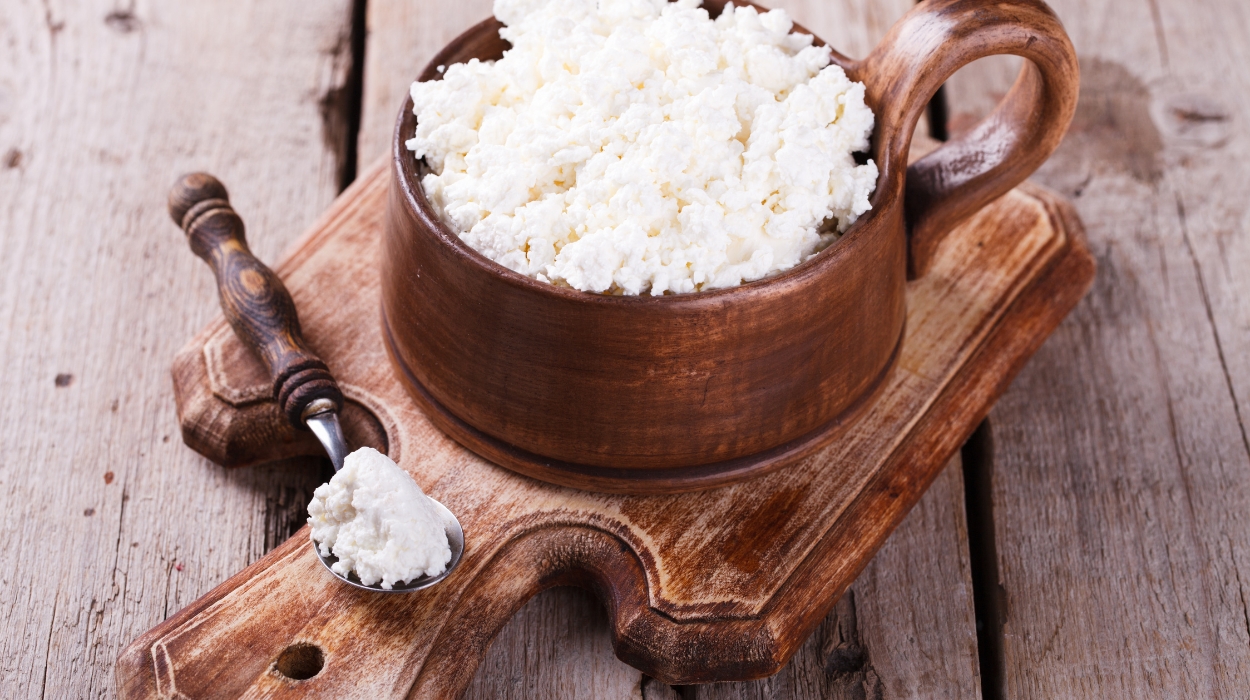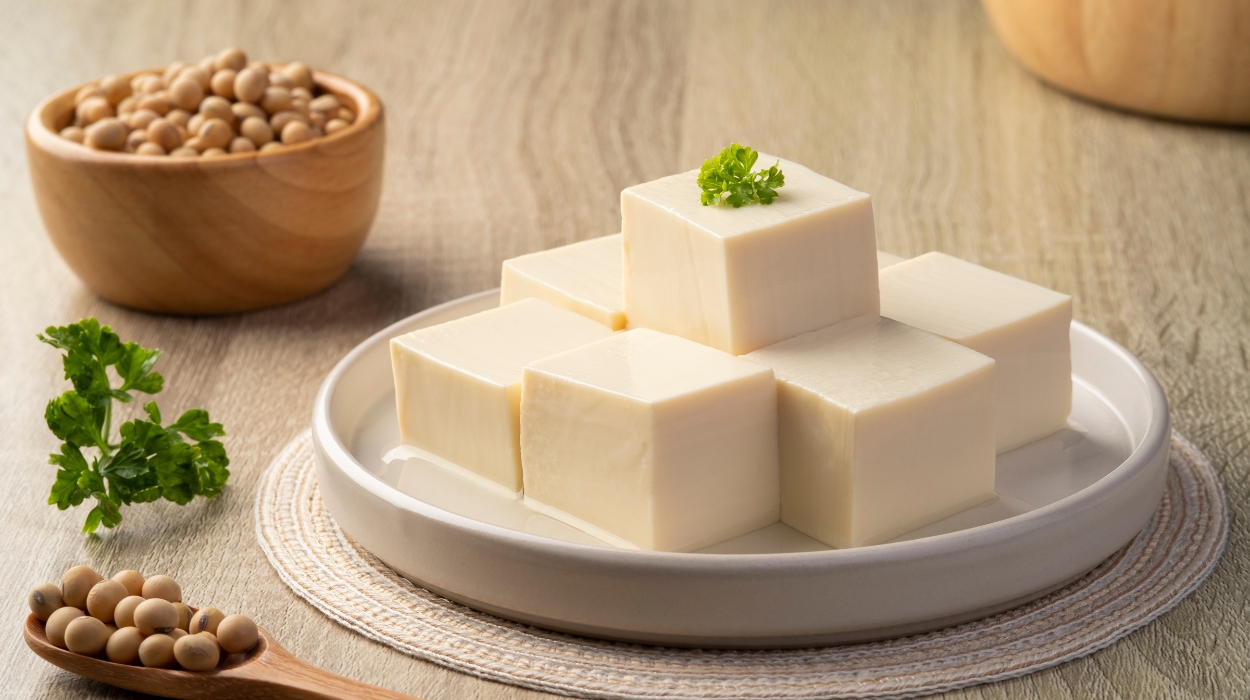 Expert's opinion
Expert's opinion
Expert's opinion
The article is a subjective view on this topic written by writers specializing in medical writing.
It may reflect on a personal journey surrounding struggles with an illness or medical condition, involve product comparisons, diet considerations, or other health-related opinions.
Although the view is entirely that of the writer, it is based on academic experiences and scientific research they have conducted; it is fact-checked by a team of degreed medical experts, and validated by sources attached to the article.
The numbers in parenthesis (1,2,3) will take you to clickable links to related scientific papers.
What Food Makes Your Butt Bigger? 2024 Top List

Building muscle mass at the gym is one way to get a bigger butt. In addition, supplementing your diet with healthy fat, complex carbohydrates, and even muscle-building protein shakes can also supercharge your quest for the most bodacious booty on the block.
What should you be eating in order to gain weight in all the right places? If bigger and rounder buttocks are your goal, we’ve got a couple of foods you should include in your healthy diet.
Foods That Grow Your Butt
- Free-Range Poultry
- Cottage Cheese
- Quinoa
- Nuts and Nut Butter
- Brown Rice
- Tofu and Tempeh
- Whole Grain Wheat Bread
- Beans of Any Variety
- Sweet Potatoes
- Fatty Fish
- Eggs
- Greek Yogurt
- Peas
- Grass-Fed Beef
- Milk
- Protein Shakes and Supplements
- Avocados
While exercise and genetic disposition will influence the trajectory of your fitness journey greatly;[1] certain foods tend to increase muscle protein synthesis and promote muscle growth more than others.
If your butt workouts alone simply aren’t doing the job, you might need to call in for backup. Any of the healthy foods on this list will definitely be able to help.
What Food Makes Your Butt Bigger?
Free-Range Poultry
Few can deny the appeal of a perfect chicken breast when the time to feast has come. In fact, chicken has been shown to be just as effective in the way of muscle synthesis as beef. If you’re watching your cholesterol or cardiovascular health, it’s the perfect substitute[2] for red meat.
A roasted chicken breast and a side of complex carbohydrates are probably the perfect closing meal for anybody who dreams of big booty.
Cottage Cheese

A high-protein diet has been linked positively[3] to improvements in maximal strength and other performance metrics, a decrease in body fat percentage, and improved muscle growth.
This is in comparison to normal levels of protein intake, all without imposing any adverse secondary effects.
Cottage cheese is naturally high in protein and can be incorporated into your diet in a myriad of ways. This heart-healthy, low-fat snack can be eaten as is with fruit or nuts or used to enhance a number of other dishes and salads.
Quinoa
Quinoa is a complete plant-based protein – that is, all nine of the essential amino acids (protein-building blocks) required to support the human body can be found here.[4]
Additional health benefits of quinoa include approximately 8 grams of protein per serving, plenty of healthy carbs and dietary fiber, and additional vitamins and minerals. It’s a great side for any of the lean protein options on this list, resulting in a completely balanced meal.
Nuts And Nut Butter
Nuts, seeds, and any of the secondary products procured therein are all great vegan-friendly sources of protein.
Some nuts and seeds like walnuts, chia, and flax seeds are also excellent plant-based sources of omega-3 fatty acids. These fatty acids have also been shown to improve cellular regeneration as it relates to muscle synthesis.
All-natural peanut butter is one affordable source of pure, plant-powered protein, with approximately 8 grams of protein per serving. If you’re a snacker, we recommend keeping your favorite nuts and seeds on hand for energy at a moment’s notice.
Whoever said you couldn’t get a bigger butt on a plant-based diet?[5]
Brown Rice
Will brown rice or white rice make your butt bigger? It depends.
Both can help you lose weight around your midsection without cutting into your gains elsewhere, your booty included. Brown rice is higher in dietary fiber and triggers fewer blood sugar spikes than an equivalent serving of white rice.
If you’re trying to lose a few pounds while simultaneously building lean muscle, brown rice might be the way to go.
In either case, rice protein has been shown to be on par with soy and whey isolates in terms of its ability to deliver[6] nutrients necessary for muscle function, both pre- and post-workout.
Tofu And Tempeh

Quinoa, soy, and soy products like tofu and tempeh are all complete plant-based protein sources. If you’re vegan and your gym performance and muscular growth are both high priorities for you, you should be including plenty of soy products like tofu in your weekly routine.
When compared to beef, soy is just as capable[7] of supplying the body with everything required for adequate muscular regeneration post-workout. To capitalize on these health benefits, you should consume whole soy foods like miso broth, edamame, soy milk, and, of course, tofu and tempeh, as mentioned above.
Whole Grain Wheat Bread
Carb lovers interested in plumping up their booty may want to consider the convenience and versatility of he humble slice of whole-grain bread.[8] Some toast with peanut butter or an impromptu egg or tuna salad sandwich are all highly satiating, delicious, and quick to throw together in a hurry.
The whole grains found in many types of wheat bread supply the body with not only complex carbs and fiber—they’re also an incredibly rich source of protein, as well, if you include only truly whole-grain brands[8] into your routine.
Beans And Other Legumes
There’s a reason your mom told you to eat your beans and rice growing up. Beans and other legumes are extraordinarily rich in protein while remaining low in saturated fat and cholesterol.
They’re the perfect diet food for weight loss that won’t leave your booty falling flat.
Beans and legumes are full of plant-based proteins, but they also offer your body other micronutrients like magnesium and potassium.[9] These minerals are highly beneficial for people with high blood pressure and other forms of heart disease, and they supply your body with plenty of sustained energy throughout the day.
Sweet Potatoes
One of our favorite foods that make your butt bigger is sweet potatoes. We love white potatoes and other savory cultivars like Yukon Gold potatoes, but the additional minerals and micronutrients found in orange-fleshed sweet potatoes make them the true winner[10] in our eyes and hearts.
Consuming carbs like sweet potatoes with foods high in protein may improve[11] post-workout muscle recovery compared to your results after consuming carbs alone.
Both provide your body with the fuel that it needs to drive protein synthesis everywhere, including in your butt.
Fatty Fish
Fish like tuna and salmon are not only delicious—they’re also some of the best proteins to put on your plate if you want to make your butt bigger.
Fish is rich in omega-3 fatty acids and other highly beneficial compounds[12] associated with more lean muscle mass and improved athletic performance.
Omega-3 fatty acids especially have been shown to enhance skeletal muscle anabolism, the process by which the food that you eat is transformed and built into bigger, stronger muscle fibers deep inside your muscles.
Eggs
If protein intake is your game, there is no reason not to love eggs. They’re incredibly high in protein and easy to digest, making them a near-ideal way to pack more protein into every meal.
Eggs aren’t just great for protein, though. They’re also highly beneficial to your body when building new muscle tissue post-workout.[13]
The essential nutrients they contain have been shown to stimulate protein synthesis much more effectively than other foods, even when matched for protein by the gram.
It’s important to note that egg yolks are high in cholesterol. For most people, this is not a problem. But if you have high cholesterol, speak to your doctor about the number of eggs that are safe for you.
Greek Yogurt
Greek yogurt is one of our favorite ways to get thick. It takes little to dress it up and can be used for everything from marinating meat to whipping up a delicious and nutritious veggie dip.
The calcium in Greek yogurt[14] and other dairy products may be able to help you lose body fat. The casein and whey that it contains are valuable sources of protein that your body can build muscle.
Seven ounces of Greek yogurt deliver a whopping 20 grams of protein to the body, making it one extremely effective way to attain a bigger butt without overdoing it on calories.
Peas
The pea protein boon shouldn’t be reserved only for strict vegans. Pea protein is an incredibly lean source of protein, and you don’t necessarily need to down an entire bowl of steamed peas to feel the power for yourself.
Pea milk is perfect for those focused on their gains above all else, especially in the glutes. They outperform whey protein isolates[15] in a clinical setting in terms of the increase in muscle thickness that trial participants exhibited after supplementation combined with weight training.
Grass-Fed Beef
High-quality protein and regular exercise go hand-in-hand. Beef ingestion can increase muscle growth when eaten as part of a larger resistance training regimen.[16]
It’s one great example to show how our dietary habits and exercise go hand in hand.
Paleo enthusiasts can probably attest to the restorative power of a hearty beef steak, especially after an intense session at the gym.[17] It’s been shown to improve lower-limb muscle strength and build lean muscle mass, resulting in a tighter, sexier butt when compared to whey protein supplementation only.
Milk
Milk is an excellent post-workout recovery beverage, replenishing the body[18] and improving performance[19] later. To build muscle faster, you can increase your milk’s protein content with protein powders for an added kick.
For a fast and easy energy boost at any time of the day, you cannot go wrong with a glass of milk. With 8 grams of protein per serving, it’s one of the quickest ways to refuel with zero prep work and clean-up.
Protein Shakes And Supplements
We would be remiss in writing an article on booty gains without including protein powders and supplements. Protein supplements rich in vitamins and minerals are one efficient way to add protein to any snack or recovery shake.
Nothing says “flat booty” like depriving yourself of what your muscles need to recover. Our recommendation: find a protein shake that you love and sneak it into your favorite foods baked goods, smoothie bowls, or whatever else you like to eat.
Avocado
Even in terms of calories alone, the power of avocado cannot be denied. Few other plant-based superfoods offer a cocktail of amino acids, healthy fats, and beneficial micronutrients[20] this is diverse and satiating.
The magnesium found in avocados[21] may also be able to improve muscle contraction and even reduce inflammation after exercise, allowing your body to build your butt back up bolder and more beautiful than ever.
Your next gym session will feel larger than life, every squat is more powerful than the last, thanks to this amino acid-rich source of energy.
Booty Gains And Improved Tone: What Should You Be Eating?
These are only a few of the best foods for a bigger butt; all of the underlying principles outlined here apply just as readily to other complexes, high-protein foods. Once you’ve had a chance to crunch your own numbers, the perfect portions and ratios for all of the above will fall right into place.
The wrong type of diet may hinder your gym session. Luckily, the suggestions and recommendations above should have you and your butt on the right track in no time.
+ 21 sources
Health Canal avoids using tertiary references. We have strict sourcing guidelines and rely on peer-reviewed studies, academic researches from medical associations and institutions. To ensure the accuracy of articles in Health Canal, you can read more about the editorial process here
- Stephan van Vliet, Beals, J.W., Martinez, I.G., Skinner, S.K. and Burd, N.A. (2018). Achieving Optimal Post-Exercise Muscle Protein Remodeling in Physically Active Adults through Whole Food Consumption. Nutrients, [online] 10(2), pp.224–224. doi:https://doi.org/10.3390/nu10020224.
- Sharp, M., Lowery, R.P., Shields, K.A., Lane, J.R., Gray, J.L., Partl, J.M., Hayes, D.W., Wilson, G.J., Hollmer, C.A., Minivich, J.R. and Wilson, J.M. (2018). The Effects of Beef, Chicken, or Whey Protein After Workout on Body Composition and Muscle Performance. The Journal of Strength and Conditioning Research, [online] 32(8), pp.2233–2242. doi:https://doi.org/10.1519/jsc.0000000000001936.
- José António, Ellerbroek, A., Silver, T., Orris, S., Scheiner, M., González, A. and Peacock, C.A. (2015). A high protein diet (3.4 g/kg/d) combined with a heavy resistance training program improves body composition in healthy trained men and women – a follow-up investigation. Journal of the International Society of Sports Nutrition, [online] 12(1). doi:https://doi.org/10.1186/s12970-015-0100-0.
- Angeli, V., Miguel, P., Danilo Crispim Massuela, Muhammad Waleed Khan, Hamar, A., Forough Khajehei, Graeff–Hönninger, S. and Piatti, C. (2020). Quinoa (Chenopodium quinoa Willd.): An Overview of the Potentials of the ‘Golden Grain’ and Socio-Economic and Environmental Aspects of Its Cultivation and Marketization. Foods, [online] 9(2), pp.216–216. doi:https://doi.org/10.3390/foods9020216.
- Marsh, K., Munn, E.A. and Baines, S. (2013). Protein and vegetarian diets. Medical Journal of Australia, [online] 199(S4). doi:https://doi.org/10.5694/mja11.11492.
- Kalman, D. (2014). Amino Acid Composition of an Organic Brown Rice Protein Concentrate and Isolate Compared to Soy and Whey Concentrates and Isolates. Foods, [online] 3(3), pp.394–402. doi:https://doi.org/10.3390/foods3030394.
- Rizzo, G. and Baroni, L. (2018). Soy, Soy Foods and Their Role in Vegetarian Diets. Nutrients, [online] 10(1), pp.43–43. doi:https://doi.org/10.3390/nu10010043.
- Wieser, H., Koehler, P. and Katharina Anne Scherf (2020). The Two Faces of Wheat. Frontiers in Nutrition, [online] 7. doi:https://doi.org/10.3389/fnut.2020.517313.
- Polak, R., Phillips, E.M. and Campbell, A. (2015). Legumes: Health Benefits and Culinary Approaches to Increase Intake. Clinical Diabetes, [online] 33(4), pp.198–205. doi:https://doi.org/10.2337/diaclin.33.4.198.
- Neela, S. and Fanta, S.W. (2019). Review on nutritional composition of orange‐fleshed sweet potato and its role in management of vitamin A deficiency. Food Science & Nutrition, 7(6). doi:https://doi.org/10.1002/fsn3.1063.
- Breen, L., Philp, A., Witard, O.C., Jackman, S.R., Selby, A., Smith, K., Baar, K. and Tipton, K.D. (2011). The influence of carbohydrate–protein co‐ingestion following endurance exercise on myofibrillar and mitochondrial protein synthesis. The Journal of Physiology, [online] 589(16), pp.4011–4025. doi:https://doi.org/10.1113/jphysiol.2011.211888.
- McGlory, C., Calder, P.C. and Everson Araújo Nunes (2019). The Influence of Omega-3 Fatty Acids on Skeletal Muscle Protein Turnover in Health, Disuse, and Disease. Frontiers in Nutrition, [online] 6. doi:https://doi.org/10.3389/fnut.2019.00144.
- Stephan van Vliet, Shy, E.L., Sidney Abou Sawan, Beals, J.W., Daniel, Skinner, S.K., Ulanov, A., Zhong, L., Paluska, S.A., Parsons, C.M., Moore, D.R. and Burd, N.A. (2017). Consumption of whole eggs promotes greater stimulation of postexercise muscle protein synthesis than consumption of isonitrogenous amounts of egg whites in young men. The American Journal of Clinical Nutrition, [online] 106(6), pp.1401–1412. doi:https://doi.org/10.3945/ajcn.117.159855.
- Bridge, A.D., Joseph Alexander Brown, Snider, H., Nasato, M., Ward, W.E., Roy, B.D. and Josse, A.R. (2019). Greek Yogurt and 12 Weeks of Exercise Training on Strength, Muscle Thickness and Body Composition in Lean, Untrained, University-Aged Males. Frontiers in Nutrition, [online] 6. doi:https://doi.org/10.3389/fnut.2019.00055.
- Babault, N., Christos Païzis, Deley, G., Laetitia Guérin‐Deremaux, M.-H. Saniez, Lefranc‐Millot, C. and François-André Allaert (2015). Pea proteins oral supplementation promotes muscle thickness gains during resistance training: a double-blind, randomized, Placebo-controlled clinical trial vs. Whey protein. Journal of the International Society of Sports Nutrition, [online] 12(1). doi:https://doi.org/10.1186/s12970-014-0064-5.
- Robinson, M.J., Burd, N.A., Breen, L., Rerecich, T., Yang, Y., Hector, A.J., Baker, S.K. and Phillips, S.M. (2013). Dose-dependent responses of myofibrillar protein synthesis with beef ingestion are enhanced with resistance exercise in middle-aged men. Applied Physiology, Nutrition, and Metabolism, [online] 38(2), pp.120–125. doi:https://doi.org/10.1139/apnm-2012-0092.
- Valenzuela, P.L., Mata, F., Morales, J.S., Adrián Castillo‐García and Lucía, A. (2019). Does Beef Protein Supplementation Improve Body Composition and Exercise Performance? A Systematic Review and Meta-Analysis of Randomized Controlled Trials. Nutrients, [online] 11(6), pp.1429–1429. doi:https://doi.org/10.3390/nu11061429.
- Pritchett, K. and Pritchett, R. (2012). Chocolate Milk: A Post-Exercise Recovery Beverage for Endurance Sports. Medicine and sport science, [online] pp.127–134. doi:https://doi.org/10.1159/000341954.
- Cockburn, E., Bell, P.G. and Stevenson, E. (2013). Effect of Milk on Team Sport Performance after Exercise-Induced Muscle Damage. Medicine and Science in Sports and Exercise, [online] 45(8), pp.1585–1592. doi:https://doi.org/10.1249/mss.0b013e31828b7dd0.
- Dreher, M.L. and Davenport, A.J. (2013). Hass Avocado Composition and Potential Health Effects. Critical Reviews in Food Science and Nutrition, [online] 53(7), pp.738–750. doi:https://doi.org/10.1080/10408398.2011.556759.
- Zhang, Y., Pengcheng Xun, Wang, R., Mao, L. and He, K. (2017). Can Magnesium Enhance Exercise Performance? Nutrients, [online] 9(9), pp.946–946. doi:https://doi.org/10.3390/nu9090946.



